Shibam (often referred to as Shibam Hadhramaut) is a town in Yemen. With about 7,000 inhabitants, it is the seat of the Shibam District in the Hadhramaut Governorate. It is famous for its mudbrick-made high-rise buildings. The first known inscription about the city dates from the 3rd century AD. It was the capital of the Hadramawt Kingdom.
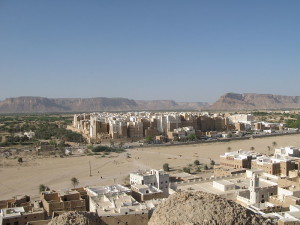
The town is located in the central-western area of Hadhramaut Governorate, in the Ramlat al-Sab`atayn desert. Its main road links Sana’a and other cities of western Yemen to the far eastern territories. The nearest towns are Seiyun, seat of an airport, and Tarim, both in the east. Another road, departing from the village of Alajlanya, in the west; links Shibam to Al Mukalla, governorate’s capital, located by the Indian Ocean.
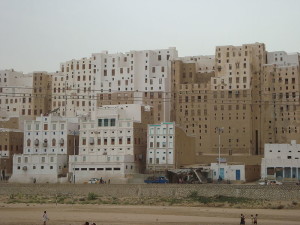
Shibam, which is now a UNESCO World Heritage Site, owes its fame to its distinct architecture. The houses of Shibam are all made out of mud brick and about 500 of them are tower blocks, which rise 5 to 11 stories high, with each floor having one or two rooms. This architectural style was used in order to protect residents from Bedouin attacks.
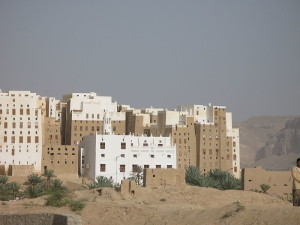
While Shibam has been in existence for an estimated 1,700 years, most of the city’s houses originate from the 16th century. Many, though, have been rebuilt numerous times in the last few centuries.
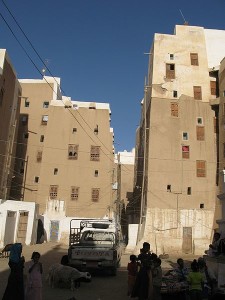
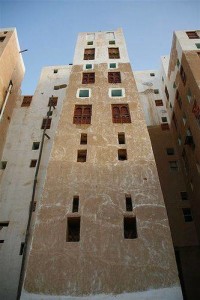
Shibam is often called “the oldest skyscraper city in the world” or “the Manhattan of the desert”, and is one of the oldest and best examples of urban planning based on the principle of vertical construction. The city has some of the tallest mud buildings in the world, with some of them over 30 meters (100 feet) high, thus being early high-rise apartment buildings. In order to protect the buildings from rain and erosion, the walls must be routinely maintained by applying fresh layers of mud.
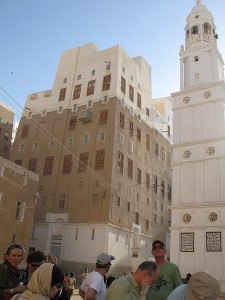
The nearby town of Tarim contains the tallest structure in the Wadi Hadhramaut valley, the mudbrick minaret of the Al-Mihdhar mosque. It stands at a height of approximately 53 meters (175 feet.) This is the tallest minaret in the southern Arabian peninsula.
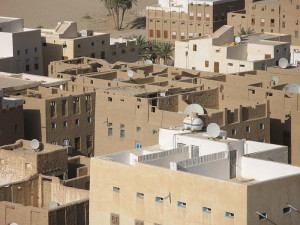
The city was heavily affected by flooding in 2008. The foundations of many of the buildings in the city were compromised by the flood waters, eventually leading to their collapse. It was also the target of an Al Qaeda attack in 2009.
Lead photo
